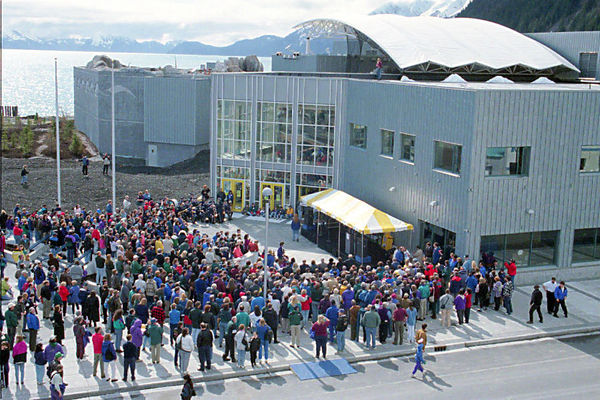Alaska Aquarium is heated with carbon dioxide and ocean water

Aquarium and Alaska Marine Life Center
Aquarium and Alaska SeaLife Center (ASLC) launched a heating system using seawater and carbon dioxide. Now this system provides 98% of all thermal needs of the Center. New system, heating 11,000 sq.m. aquarium, will save about $ 15,000 per month , and reduce greenhouse gas emissions by 600 thousand kg. annually, compared with fossil fuel heaters.
The system was developed by Andy Baker, the founder of the consulting firm YourCleanEnergy. It takes the ocean water of the Bay of Resurrection, and warms up the mixture of glycol and water. The heated glycol interacts with liquid carbon dioxide, after which the latter boils. The CO 2 vapor is compressed at a pressure of 130 atm., With the result that its temperature rises. Hot steam heats the water circulating around the heating circuits.
Baker explained that the uniqueness of the system is the use of transcritical cycle heat pumps . As a result, instead of carbon dioxide emissions into the atmosphere, it is used to operate the system.
')
Carbon dioxide has long been used as a refrigerant — it's worth remembering the “dry ice” used to store and transport frozen food. Liquid carbon dioxide, passing under the item number R744, is gaining popularity due to the fact that currently used refrigerant substances are unsafe for the environment.
Its use became possible due to the development of technologies for the production of high-strength materials, since the operation of systems on CO 2 requires pressures up to 130 atm. Non-toxicity, non-flammability and the absence of a harmful effect on the ozone layer of carbon dioxide can lead to the fact that it replaces modern refrigerants in industrial cooling installations, automobiles and water heaters.
The Center for the Study of Marine Life in Alaska is a public aquarium and rehabilitation center for marine mammals, which opened in the Bay of Resurrection in 1998. It is argued that this is the only center in the world dedicated exclusively to studying the environment of the northern seas.
Source: https://habr.com/ru/post/372161/
All Articles